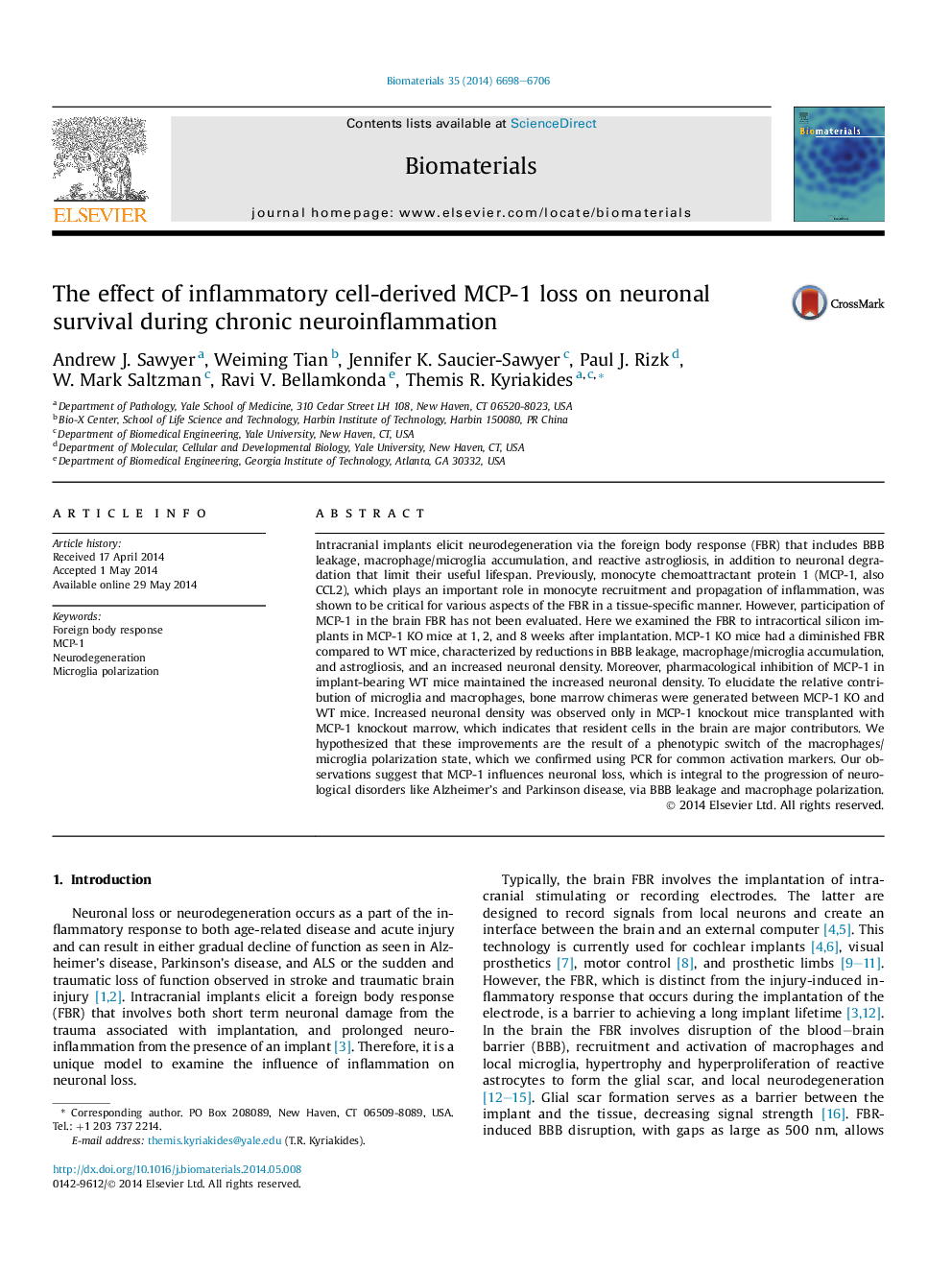| Article ID | Journal | Published Year | Pages | File Type |
|---|---|---|---|---|
| 10227496 | Biomaterials | 2014 | 9 Pages |
Abstract
Intracranial implants elicit neurodegeneration via the foreign body response (FBR) that includes BBB leakage, macrophage/microglia accumulation, and reactive astrogliosis, in addition to neuronal degradation that limit their useful lifespan. Previously, monocyte chemoattractant protein 1 (MCP-1, also CCL2), which plays an important role in monocyte recruitment and propagation of inflammation, was shown to be critical for various aspects of the FBR in a tissue-specific manner. However, participation of MCP-1 in the brain FBR has not been evaluated. Here we examined the FBR to intracortical silicon implants in MCP-1 KO mice at 1, 2, and 8 weeks after implantation. MCP-1 KO mice had a diminished FBR compared to WT mice, characterized by reductions in BBB leakage, macrophage/microglia accumulation, and astrogliosis, and an increased neuronal density. Moreover, pharmacological inhibition of MCP-1 in implant-bearing WT mice maintained the increased neuronal density. To elucidate the relative contribution of microglia and macrophages, bone marrow chimeras were generated between MCP-1 KO and WT mice. Increased neuronal density was observed only in MCP-1 knockout mice transplanted with MCP-1 knockout marrow, which indicates that resident cells in the brain are major contributors. We hypothesized that these improvements are the result of a phenotypic switch of the macrophages/microglia polarization state, which we confirmed using PCR for common activation markers. Our observations suggest that MCP-1 influences neuronal loss, which is integral to the progression of neurological disorders like Alzheimer's and Parkinson disease, via BBB leakage and macrophage polarization.
Related Topics
Physical Sciences and Engineering
Chemical Engineering
Bioengineering
Authors
Andrew J. Sawyer, Weiming Tian, Jennifer K. Saucier-Sawyer, Paul J. Rizk, W. Mark Saltzman, Ravi V. Bellamkonda, Themis R. Kyriakides,
